This question, although similar to others, doesn't seem to be a duplicate. If it is, please clarify and I will be happy to merge.
I want to bind to a writable DataGridView using a linq-to-entities query containing a join. The model is as follows:

The denormalized DataGridView should be bound like so:

The following code binds but results in a readonly DataGridView because the linq-to-entities query returns an anonymous type (see this post). I'm at an impasse because I think I need the anonymous type to do the denormalization.
var query = from t in iDictionaryContext.DisplayTexts
from l in iDictionaryContext.Languages
where
t.LanguageID == l.LanguageID
select new
{
Key = t.DisplayKey,
Text = t.DisplayText1,
Language = l.LanguageName
};
I also tried the solution suggested here but it seems to apply to linq-to-sql but not to linq-to-entities. When setting the bindingsource.datasource to the linq-to-entities query, an exception is thrown reading "Only parameterless constructors and initializers are supported in LINQ to Entities."
Thank you for your advice,
Tim